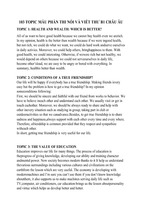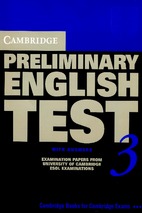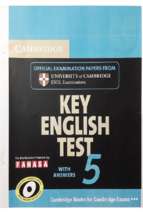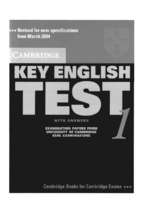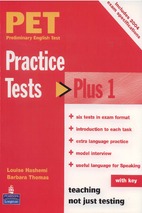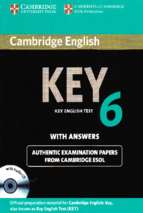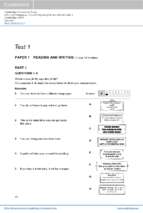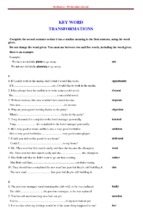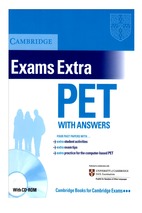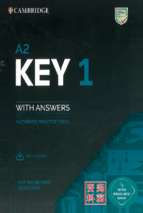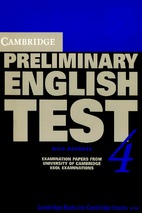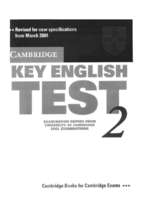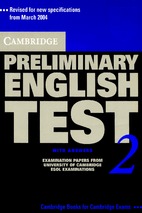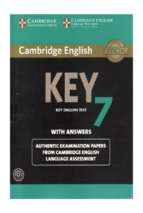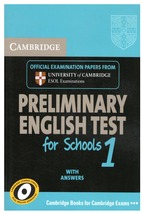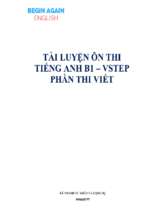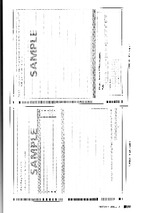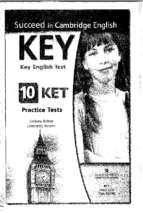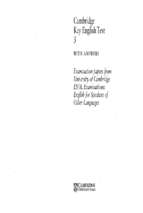VIETNAM NATIONAL UNIVERSITY, HA NOI
UNIVERSITY OF LANGUAGES AND INTERNATIONAL STUDIES
FACULTY OF POST-GRADUATE STUDIES
ĐỖ NHƯ QUỲNH
THE CONSTRUCTION OF LANGUAGE TEACHER IDENTITY
AMONG GRADUATES FROM OTHER MAJORS IN VIETNAM
(Quá trình kiến tạo bản dạng giáo viên ngoại ngữ của
những sinh viên Việt Nam không tốt nghiệp ngành sư phạm)
M.A. MAJOR PROGRAMME THESIS
Field: English Linguistics
Code: 8220201.01
Supervisor: Hoàng Thị Hạnh, PhD.
HANOI – 2021
VIETNAM NATIONAL UNIVERSITY, HA NOI
UNIVERSITY OF LANGUAGES AND INTERNATIONAL STUDIES
FACULTY OF POST-GRADUATE STUDIES
ĐỖ NHƯ QUỲNH
THE CONSTRUCTION OF LANGUAGE TEACHER IDENTITY
AMONG GRADUATES FROM OTHER MAJORS IN VIETNAM
(Quá trình kiến tạo bản dạng giáo viên ngoại ngữ của
những sinh viên Việt Nam không tốt nghiệp ngành sư phạm)
M.A. MAJOR PROGRAMME THESIS
Field: English Linguistics
Code: 8220201.01
Supervisor: Hoàng Thị Hạnh, PhD.
HANOI – 2021
DECLARATION
I hereby certify the thesis entitled “The construction of language teacher
identity among graduates from other majors in Vietnam ” as my own work in the
fulfillment of the requirements for the Degree of Master of Arts at the University of
Languages and International Studies, Vietnam National University, Hanoi.
Hanoi, 2020
Đỗ Như Quỳnh
i
ACKNOWLEDGEMENTS
Firstly, I would like to convey my utmost appreciation to my supervisor, Dr.
Hoàng Thị Hạnh, for guiding me through my lost days with her wide-angle research
lenses, effective research tools, and, most preciously, her tender care. Without her,
this study would have been left unfinished.
Secondly, I am extremely grateful to Mr. Ngô Xuân Minh, with whom I had a
critical reflection about my past teaching career and came up with the idea for this
research.
Thirdly, I want to send my sincere gratitude to my beloved friend Trần
Phương Linh, who supports me a lot with administrative procedures when I am far
away from home to make the thesis defense possible.
Last but not least, I would like to thank myself for being resilient for the last
fifteen months of conducting this research.
ii
ABSTRACT
The search for the teacher identity among language teachers has been popular for
many decades; however, its scope mainly surrounds the mainstream teachers working
the field or the students teachers and not yet extends to the graduates of other fields
who choose to work as language teachers after graduating from colleges. This
research is an attempt to invite those “laymen” into the toward-centrum picture of
teaching and makes them visible to the researchers of teacher identity. In this
research, I aim to explore why graduates from other majors pursue the teaching
career and how they construct their teacher identity. The findings show that the
participants form and construct their identity not only from their learning experiences
with model teachers, from their real teaching practices, from the vulnerability of
teachers’ (in)confidence but also from the social contexts affected by neoliberal
tenets. To put it concisely, teachers’ identity derives from three areas, namely
identity in practice, identity in emotion and identity in neoliberal discourse.
iii
TABLE OF CONTENTS
DECLARATION ..................................................................................................................................... i
ACKNOWLEDGEMENTS .................................................................................................................... ii
ABSTRACT .......................................................................................................................................... iii
TABLE OF CONTENTS ....................................................................................................................... iv
LIST OF ABBREVIATION.................................................................................................................... v
CHAPTER I: INTRODUCTION............................................................................................................. 1
1.1.
Rationale of the study and aim of the research ........................................................................ 1
1.2.
Scope of the study .................................................................................................................. 2
1.3.
Significance of the study ........................................................................................................ 3
1.4.
Organization of the thesis ....................................................................................................... 3
CHAPTER II: LITERATURE REVIEW ................................................................................................. 5
2.1. Defining language teacher identity ............................................................................................... 5
2.2. Approaches to language teacher identity....................................................................................... 6
2.3. Literature on language teacher identity ......................................................................................... 9
CHAPTER III. METHODOLOGY ........................................................................................................17
3.1. Research question .......................................................................................................................17
3.2. Research methods .......................................................................................................................17
3.3. Selection of informants ...............................................................................................................18
3.4. Data collection ............................................................................................................................22
3.5. Data analysis...............................................................................................................................24
CHAPTER IV: FINDINGS AND ANALYSIS .......................................................................................26
4.1. Positive experiences with tutoring initiate teacher’s professional interest .....................................26
4.2. Model teachers in extra classes nurture the professional growth...................................................33
4.3. Trials and creativity contribute to teachers’ professional growth ..................................................44
4.4. Teaching practices conflict with beliefs, yet align with the selves ................................................50
4.5. Participants’ vulnerability validates their professional identity.....................................................53
4.6. Neoliberalism and the teacher-entrepreneur positioning ...............................................................57
CHAPTER V: DISCUSSION AND CONCLUSIONS............................................................................66
5.1. Discussion and conclusions .........................................................................................................66
5.1.1. Identity in practice ...............................................................................................................66
5.1.2. Identity in emotion ...............................................................................................................68
5.1.3. Identity in neoliberal discourse .............................................................................................69
5.2. Limitations and suggestions for further research ..........................................................................72
References .............................................................................................................................................74
iv
LIST OF ABBREVIATION
CLT
Communicative Language Teaching
ESOL
English for Speakers of Other Languages
GCSE
General Certificate of Secondary Education
TESOL
Teaching English to Speakers of Other Languages
v
CHAPTER I: INTRODUCTION
This chapter states the rationale of the study, research’s aims, the scope of the
study, how it can contribute to the current research landscape in English
teacher identity. It also proposes the research question that serves as the
guiding line for the whole research.
1.1. Rationale of the study and aim of the research
Since the emergence of the concept “identity crisis” of Erik Erikson in the
1950s, more research has been drawn to the quest of identity. Researchers in
the education field are inquisitive about how people establish their teacher
identity. Their studies hitherto has investigated the teacher identity formation
among student teachers at college (Moses et al., 2017; Watt et al., 2012),
students who are pursuing a master degree in TESOL (Swearingen, 2019;
Nguyen & Dao, 2019; O’Brien & Schillaci, 2002), or teachers at schools
(Lasky, 2005; Farrell, 2011); however, there has been little work on the groups
of graduates who are not majored in teacher education yet now working in
teaching profession.
In Vietnam, English has become increasingly popular. Especially after it
became a compulsory subject taught in four skills for ten years from Grade 3 to
Grade 12 in the general education system (The Prime Minister, 2008), there
was higher demand of English learning both in formal and non-formal sectors
(Hoang, 2020). It then witnessed the shortage of qualified teachers both in
school and in private institutes. While some large international language
centers are able to recruit foreign teachers to work for them, the small language
schools take full advantage of the domestic teacher resources. The thing is,
when there is a shortage of teachers due to the up-surging demand, many
1
teachers working in private English institutes are competent at English yet not
formally trained to work as language teachers. These teachers came from a
variety of majors like business, marketing or finance. Some of them even
opened their own classes and established new English centers. Interestingly,
these teachers persist with the job and their classes attract a large number of
students.
As a teacher and a researcher myself, I was so curious about how these
‘laymen’ take up English teaching jobs and maintain their professional
persistence that I decided to carry out this research. The investigation on how
they become teachers potentially broadened an understanding about the
societal shifts in Vietnam recently and, from that requisite understanding,
added more values to the comprehensive picture of research on teacher
identity.
The aim of this study is to explore why graduates from other majors pursue the
teaching career and how they construct their teacher identity. I will use
narrative inquiry methods to gain in-depth insight into the intrinsic as well as
extrinsic reasons for their choice of profession and the way they build up their
teacher image. Specifically, the research question that I deal with is:
“How do graduates from other majors construct their English language teacher
identity?”
1.2. Scope of the study
This paper investigates the identity formation and construction of four underthirty English teachers who are now working in the private sectors such as
home classes or English centers. They all major in economics- and business2
related fields in their bachelor degrees, yet pursue the English language
teaching career after graduation.
1.3. Significance of the study
The findings of this study will add values to not only the language teacher
identity field but also to the university administrators and the ‘non-mainstream’
teacher community. The language teacher identity field, after this research, will
be extended, though minimally, to an area that has been unknown to
researchers whose works focus on ‘mainstream’ teachers or students teachers.
For university administrators in teacher education, my research possibly makes
them aware of what is happening outside schools; they can therefore reflect
upon their curriculums to make any possible adjustments that benefit their
students, perhaps to make students more competitive to students from other
majors. Regarding the ‘non-mainstream’ teacher community, my research may
shed some light on why and how they embark on the teaching career and give
them a chance to contemplate their future.
1.4. Organization of the thesis
This chapter has indicated the motivations for this study, the objectives of the
research, and the scope of investigation. The remaining chapters are organized
as follows:
Chapter II contextualizes the study in the relevant literature of language teacher
identity and reviews several approaches to investigate language teacher
identity.
3
In chapter III, the methodology of the research is described.
Chapter IV is a presentation of research findings of the formation and
construction of English teacher identity.
In chapter V, a thorough discussion in comparison with previous literature and
a conclusion are provided. Some limitations and suggestions for further
research will also be presented towards the end of chapter V.
4
CHAPTER II: LITERATURE REVIEW
This chapter provides an overview of the contextual background of the study. It
also gives the working definition of language teacher identity, reviews some
approaches to language teacher identity and presents the findings of previous
studies.
2.1. Defining language teacher identity
The literature on teaching and teacher education hitherto commonly agrees that
identity is dynamic. It does not only stem from one’s natural state – natureidentity, derive from a position recognized by authority – institution-identity,
result from the discourse of others about oneself – discourse-identity, but also
lie in one’s practices in relation to external groups (Gee, 2001, cited in
Beauchamp & Thomas, 2009). It emerges and reshapes itself continuously. The
dynamicity of identity can be observed in the way researchers named their
studies as the ‘development’ of identity (i.e. Olsen, 2008), the ‘construction” of
identity (i.e. Lave & Wenger, 1991), identity ‘formation’ (i.e. Rodgers & Scott,
2008), or ‘shaping’ an identity (i.e. Flores & Day, 2006).
The working definitions of teacher identity are recorded in many studies
(Lasky, 2005; Ha & Que, 2006; Hong, Greene & Lowery, 2016; Li, 2020);
however, only few researchers made an attempt in defining language teacher
identity (i.e. Olsen, 2008; Sachs, 2005). The definition proposed by Barkhuizen
(2017) seems to be the most inclusive compared to others (i.e. Olsen, 2008;
Sachs, 2005); therefore, I would like to use his definition in my research:
5
“Language teacher identities (LTIs) are cognitive, social,
emotional, ideological and historical – they are both inside the
teacher and outside in the social, material and technological world.
LTIs are being and doing, feeling and imagining, and storying.
They are struggle and harmony: they are contested and resisted, by
self and others, and they are also accepted, acknowledged and
valued, by self and others. They are core and peripheral, personal
and professional, they are dynamic, multiple, and hybrid, and they
are foregrounded and backgrounded. And LTIs change, short-term
and over time – discursively in social interaction with teacher
educators, learners, teachers, administrators and the wider
community, and in material interaction with spaces, places and
objects in classrooms, institutions and online.” (Barkhuizen, 2017,
p. 4)
Implied from the definition above, becoming a teacher is the collective
sequence of many social-historical events that stimulate the changes in
cognition and emotion. Those changes do not trigger one’s spontaneous wish to
become a teacher, yet interlocking-ly enable the prospect of working as a
teacher. The study of teacher identity is therefore the act of de-layering that
collective sequence and making it visible to the world.
2.2. Approaches to language teacher identity
In this part, I will review several approaches in studying language teacher
identity, namely social identity theory, situated learning, and frame
perspectives, and then state the theoretical approach that I adopt in my
research.
6
Within the social identity theory approach, researchers mostly base their
investigation of identity on the social categories created by the society (i.e.
nationality, race, class,…) (Varghese et al., 2005). Identities of teachers in
those studies are often attached to one/or more given categories. For example,
the participants in the research of Nguyen and Dao (2019) put themselves into
the nonnative category due to their lack of competence in English language.
The fact that they later pursued the native-likeness in their English capacity in
order to step out from the peripheral position in English teacher market seems
to reinforce the binary native/nonnative language background mindset among
ESOL teachers rather than blurring its boundary.
When it comes to the situated learning approach, learning, which is often
attached to the teacher training activities, was viewed as an identification
process (Varghese et al., 2005). In other words, there was a link between
learning and identity formation. Teacher identity of Natasha – a thirty
something Korean teacher, as an illustration, has been negotiated throughout
her MA TESOL program in the USA (Costa, 2015). Despite her negative
association of nonnative English speaker categorization due to her inferior
English competence and teaching styles, she successfully transcended the
notion of nativeness by realizing that what made her a professional teacher
were more constituted by collaborative learning, facilitator and authentic
materials development rather than the nativeness. Similarly, Minfang – an
underprivileged student from a rural area of China – has dynamically
constructed his EFL teacher image thanks to the thorough learning of CLT
(Tsui, 2007). His teacher identity was built up from an incompetent language
learner to an competent one, then from a grammar learner with the hatred to
CLT till a custodian of CLT, from a marginal EFL teacher who even needed to
7
bury his crippling student identity and disgraceful past to an official CLT
teacher of the English Department at Nanda University in the Guangdong
province. The CLT courses for Minfang as a student as well as a lecturer did
transform him from a person who was afraid of shouldering on his teacher role
to a confident lecturer in a university department.
From the frame perspectives, Pennington (2015) stated that a teacher’s
educational experience and degree should be the starting point for developing
professional identity. That identity then develops through a “dialectic
interaction” between the individual or practitioner’s aspects of teaching and the
field or disciplinary level - which is, Pennington pointed out, TESOL field
(Pennington, 2015, p. 42). For example, teachers in the research of Sharkey
(2004) constructed their identities by mediating their teaching practices in
accordance with many layers of institutional contexts such as classroom, ESOL
program within the school, school community, district ESOL program, school
district, city and state, and academic contexts such as the knowledge about
TESOL and about Kachru’s inner/outer circle of English. In fact, teacher
development does not occur in a vacuum; their identities are much affected by
the broader educational contexts in which their pedagogical activities are
embedded.
The three approaches above have some weaknesses. Firstly, the social identity
theory is limited because it relies on static social categories, which possibly
deters researchers from further investigating “the evolution of teacher identity
and the moment-by-moment production of that identity” (Varghese et al., 2005,
p. 27). Also, the emphasis on native/nonnative undervalues other factors that
collectively participate in the identity construction process. Secondly, though
the situated learning approach has overcome the native/nonnative dichotomy, it
8
stresses much on the role of teacher education programs meanwhile most
participants of my research were not officially trained as such. Thirdly, the
individual and contextual investigation of the frame perspectives seems to be
more institutional and TESOL-oriented than the scope of my research as all of
my research participants are now not working at any school or holding any
Bachelor or Master degree of TESOL. However, despite the aforementioned
weaknesses, the situated learning approach and the frame perspectives, to a
certain extent, have assisted me to write interview questions and provided me
helpful lenses to look at the data.
2.3. Literature on language teacher identity
In the search for language teacher identity, the experience of learning has been
acknowledged much in the language teaching field as a crucial part of a
teacher's ongoing process of learning to teach (i.e Freeman & Johnson, 1998;
Farrell 2011). In some autobiographical narratives, for example in Le (2018),
the researcher narrated his learning trajectory in college and then stated out
how that academic experience shaped his later teaching practices: "During my
first years of teaching, I had no idea of the nuts and bolts of teaching English,
and I taught my students the way I had been taught by my teachers at the
College.[...]. Honestly, I did not realize that I fell into the trap of teaching like I
had been taught. I know now that I should not have taught like this; I should
not have been this kind of teacher, but at that time I did not have any other
experiences and knowledge to do otherwise" (pp. 5-6). The lack of access to
other teaching methods made the researcher resort to the total use of intuition;
however, in many other cases the teachers leaned on their learning experiences
as a guideline in their initial years of teaching. One illustration is from the
9
research of Hayes in 2007. He explored the process of becoming English
teachers of three participants who reported that their choices of becoming
teachers were much inspired by their learning at secondary school and their
model teachers. In their first years of teaching, they applied some methods,
such as reading out loud, that they experienced from the learning with previous
teachers. Or in the research of Duff and Uchida (1997), the Japanese
participants capitalized a lot on their past learning experiences. They either
facilitated games to make their class less bookish or organized their class in the
seminar style to initiate more active conversations because those activities were
imprinted in their mind from their school time.
In Nguyen (2017a), the six participants in this research all agreed upon the
influences of their learning trajectories on their current teaching practices.
Thanks to their experiences as a learner, they knew exactly the strengths and
drawbacks of the old teaching methods. They therefore sought out many ways
to improve their current teaching. For example, when they realized that the
prevalence of grammar and vocabulary teaching was not conducive to learning
for the contemporary students, they proactively added more communicative
elements into their classroom yet still kept a balance between grammar and
communication.
Also, the six participants acknowledged the roles of model teachers in
nurturing their passion for English. They much preferred English to other
subjects such as sciences and humanities due to the fact that their English
teachers were more democratic, friendly and considerate to students. Those
model teachers never applied any rigid rules to the students and always gave an
ear to students. They even stayed at school after class for further tutoring. More
10
than that, the teachers in this research were impressed by the role models'
creative and fun ways of teaching grammar. These fun moments in class
inspired them to be more creative and willing to adopt new methods in their
teaching now.
Besides the influences of the past learning experiences, it is also the reflective
practice that allows teachers to contemplate what they have taught, adjust their
lessons and project their future professional plan. In the perspectives of many
researchers, reflective practice is a crucial component of language teacher
education and is indispensable to teacher's lifelong professional development
(Wright, 2010; Farrell, 2011). The practice of reflection occurs in many stages.
For example, it can be teachers' reflecting on their past learning experiences to
figuring out the pros and cons (Nguyen, 2017a; Hayes, 2007; Duff & Uchida,
1997), or the reflection between a senior teacher and a student teacher after a
class observation (Farrell, 2011; Riordan & Farr, 2015), or the looking back to
some interesting learning moments that plant some seeds in their teaching
career (Nguyen, 2017a).
The reflection of novice teachers with senior teachers is also worth some
consideration. In Riordan and Farr's 2015 research, the student teachers had a
constant consultation with their tutors, both online and face-to-face. From the
student teachers' narratives with their tutors, the author found out the depiction
of novice identities yet at the same time saw the potentiality of those student
teachers in constructing knowledge and transitioning from peripheral to
legitimate participants of a teaching community. Likewise, the novice teacher
in Farrell's 2011 research could gain a lot of teaching strategies and became
much more aware of classroom organization thanks to her tutor's nonjudgmental manner of observation. In fact, the constructive feedback from the
11
observer did put some lights to her classroom practices and enhance her
professional confidence.
Different from the professional reflections mentioned above, the research of
Nguyen (2017a) pointed to the lasting imprint of happy moments of learning
English in the participants' choice of becoming teachers. More than that, the
teachers drew on these interesting experiences to design appropriate learning
activities to students and create a conducive learning environment for students.
However, the reflective practices are not always positive and constructive as
exemplified in the three aforementioned research. The teachers' practices in
Wang's (2020) research encountered many constraints from institutional
structures, institutional norms, the inflexible curriculums, and the external
social contexts. For example, the heavy workloads, large class size and
examination fixation traditions did not allow them to develop personal rapport
with students or include any materials that are not test-oriented in the class
hours. Worse than that, they were in vain to develop their teacher identity and
considered themselves like a teaching robot with no personalities. Same as that
group of participants, the teacher in Li and Costa's (2017) research experienced
so rigid an institutional constraint that she encountered lots of professional
fatigue and emotional labor. Teaching English at a private school, she was
required to train IELTS for students. At first she was quite satisfied when her
students achieved desired scores; however, she soon realized that a high test
result did not exactly indicate a high language competence. She struggled to
negotiate the test-minded constraints from her school and act according to her
new beliefs, yet the "requisite professional space to enact transformative
teacher agency was limited at the school level" (Li & Costa, 2017, p. 288).
12
Besides the experiences, the emotion also contributed to teacher identity
formation as the changes in emotion could change one’s beliefs and their
consequential behaviors. One example was from Lasky’s (2005) research about
professional vulnerability. In this paper, he argued that vulnerability is "a
multidimensional, multifaceted emotional experience" that arises when one's
beliefs interact with the real situation (p. 901). The conflicting interactions
possibly result in some feelings of powerlessness, betrayal or anxiety - the
manifestation of vulnerability. These emotions could challenge people and
might force them to act inconsistently with their core beliefs. As the result, the
vulnerability could form one's new ways of behaving, or new identities. For
example, Lasky (2005) found out that a group of teachers adopted a new
identity after a school reform. When the school changed from a humanistic
collegial system to managerialism, they saw themselves much less effective as
teachers and experienced a deep-down de-professionalization. For them, being
a teacher meant being able to teach the whole child. Besides the care about a
child's academic development, a teacher needed to uphold students' social and
emotional development. However, due to the huge workload that the
managerialism brought, they gradually lost the in-person contact with their
students and felt in vain to support students' social and emotional lives. They
were forced to adopt the academic teacher positionings as required from the
reform mandates.
However, it does not have to be a reform to make teachers experience the ups
and downs in emotion. In daily teaching circumstances, they could possibly go
through all levels of emotions. For example, in the research of Zhu (2017), the
student teachers reported feeling eager and anxious at the beginning of their
teaching practicum, then feeling shocked and embarrassed once teaching. That
13
- Xem thêm -


